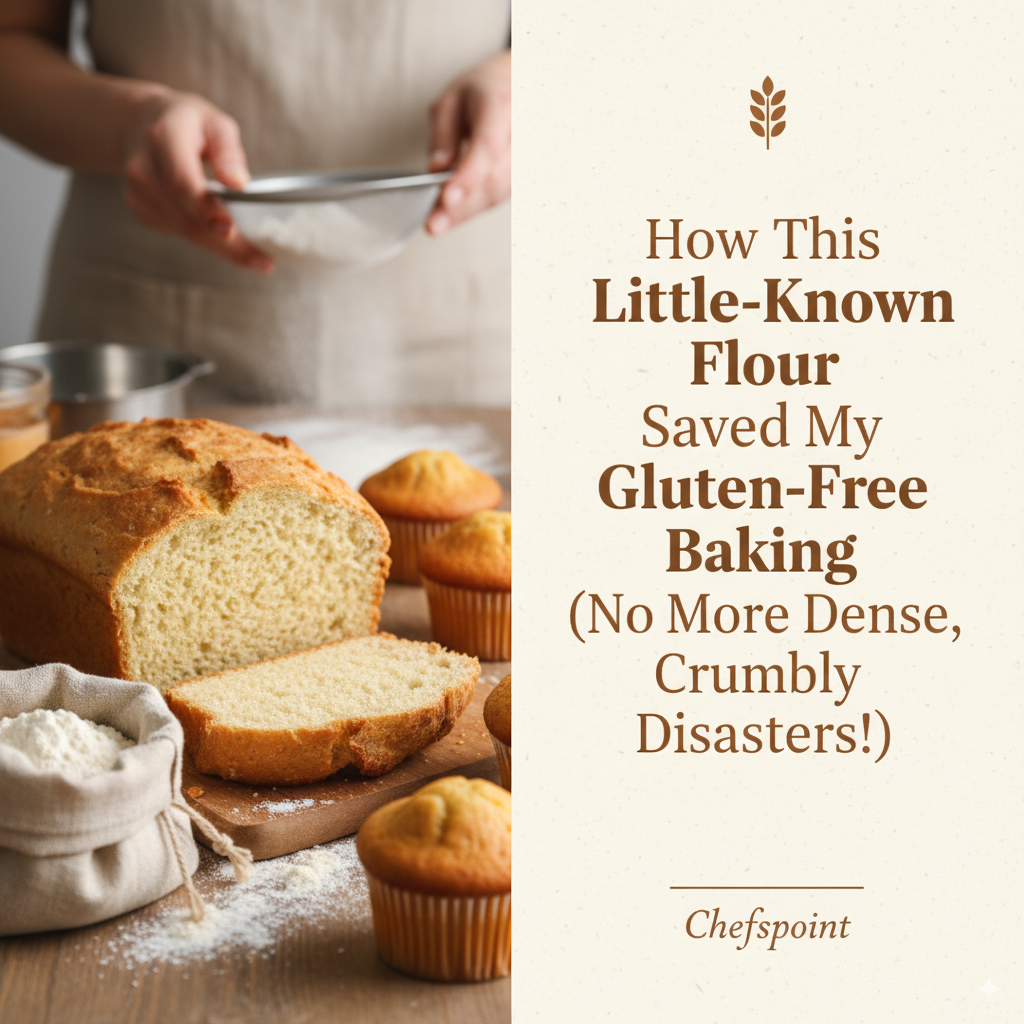

How This Little-Known Flour Saved My Gluten-Free Baking (No More Dense, Crumbly Disasters!)
Table of Contents
- Introduction: The Game-Changer That Transformed My Kitchen
- What Is Tapioca Starch and Why Does It Matter?
- My Journey from Gluten-Free Baking Disasters to Success
- The Dense, Crumbly Years
- The Discovery That Changed Everything
- How Does Tapioca Starch Work in Gluten-Free Baking?
- The Science Behind the Magic
- Why Other Starch Substitutes Fall Short
- Tapioca Starch vs. Other Gluten-Free Flours: The Ultimate Comparison
- Performance Analysis Table
- When to Use Which Flour
- My Top 7 Game-Changing Tapioca Starch Recipes
- Perfect Gluten-Free Bread That Actually Rises
- Crispy Pizza Crust That Doesn't Fall Apart
- Fluffy Pancakes That Rival Traditional Ones
- Chewy Chocolate Chip Cookies
- Light and Airy Muffins
- Silky Smooth Gravies and Sauces
- Crispy Coating for Fried Foods
- Professional Tips for Perfect Tapioca Starch Results
- Measurement and Mixing Techniques
- Storage and Handling Best Practices
- Common Mistakes and How to Avoid Them
- The Biggest Pitfalls
- Troubleshooting Guide
- Where to Source Quality Tapioca Starch in India
- Beyond Baking: Other Uses for This Versatile Ingredient
- Frequently Asked Questions
- Conclusion: Your Gluten-Free Success Story Starts Here
Introduction: The Game-Changer That Transformed My Kitchen
Two years ago, my gluten free baking attempts were legendary disasters in our household. Dense bread that could double as doorstops, cookies that crumbled at first touch, and pizza crusts that fell apart before reaching your mouth—sound familiar? I'd tried every gluten free flour blend on the market, followed countless gluten free recipes, and still produced results that made my family long for "regular" baked goods.
Then I discovered tapioca starch, a humble cassava starch derivative that most people had never heard of but professional bakers swear by. This natural thickener didn't just improve my gluten free baking—it revolutionized it. Suddenly, my bread had structure, my cookies held together, and my family stopped asking when I'd go back to "normal" flour.
Today, tapioca starch is my secret weapon for creating gluten free recipes that actually work. From acting as the perfect starch substitute to serving as an essential thickening agent, this versatile ingredient has transformed our kitchen from a gluten-free disaster zone into a place where delicious, successful gluten free cooking happens daily.
What Is Tapioca Starch and Why Does It Matter?
Tapioca starch, also known as tapioca flour or cassava starch, is extracted from the root of the cassava plant (Manihot esculenta). This natural thickener has been a staple ingredient in South American, African, and Asian cuisines for centuries, valued for its neutral flavor, excellent binding properties, and versatility in both sweet and savory applications.
What makes tapioca starch particularly valuable for gluten free baking is its unique molecular structure. Unlike wheat flour, which relies on gluten proteins for structure, this starch substitute creates elasticity and chewiness through its high amylopectin content. When heated with moisture, tapioca flour forms a clear, stretchy gel that mimics many of gluten's binding properties.
- Pure starch content: Tapioca starch contains nearly 100% pure starch, making it an ideal thickening agent for various applications
- Neutral flavor: Unlike some gluten free flour alternatives, cassava starch adds no taste, allowing other flavors to shine
- Heat stability: Maintains thickening properties across wide temperature ranges, perfect for gluten free cooking
- Clear appearance: Creates transparent gels and sauces, unlike wheat-based thickening agents that can cloud liquids
My Journey from Gluten-Free Baking Disasters to Success
The Dense, Crumbly Years
Before discovering tapioca starch, my gluten free baking adventures were exercises in frustration and waste. I'd carefully measure expensive gluten free flour blends, follow gluten free recipes to the letter, and still end up with results that were either dense as bricks or crumbly as sand. My family's polite attempts to eat these failures only made me more determined to find a solution.
The problem wasn't just the taste—it was the texture that made gluten free cooking feel like settling for less. Traditional gluten free flour combinations lacked the binding power that gluten provides, resulting in baked goods that looked right but felt wrong. No amount of xanthan gum or other starch substitute options seemed to bridge the gap.
- Texture failures: Gluten free recipes consistently produced dense, heavy results that lacked the lightness of traditional baking
- Structural problems: Cookies crumbled, bread fell apart, and pizza crusts couldn't support toppings without breaking
- Expensive waste: Premium gluten free flour blends were costly, making each failed batch financially painful
- Family disappointment: Everyone wanted to be supportive, but the results were genuinely difficult to enjoy
The Discovery That Changed Everything
The breakthrough came during a conversation with a professional baker who specialized in gluten free baking. She mentioned that the secret to her success wasn't in the flour blend itself, but in adding tapioca starch as a binding agent that mimicked gluten's properties. This natural thickener could provide the elasticity and structure that traditional gluten free flour combinations lacked.
My first experiment using tapioca flour in a simple cookie recipe was revelatory. The dough held together properly, the cookies baked evenly, and most importantly—they tasted and felt like "real" cookies. That success launched an exploration of cassava starch applications that transformed my entire approach to gluten free cooking.
- Professional insight: Expert baker revealed tapioca starch as the missing element in successful gluten free baking
- Immediate improvement: First recipe using tapioca flour produced dramatically better texture and binding
- Confidence boost: Success encouraged experimentation with more complex gluten free recipes
- Family acceptance: Finally produced baked goods that everyone genuinely enjoyed eating
How Does Tapioca Starch Work in Gluten-Free Baking?
The Science Behind the Magic
Understanding how tapioca starch functions in gluten free baking helps explain why this starch substitute succeeds where others fail. When heated with moisture, tapioca flour undergoes gelatinization, forming flexible, elastic bonds that provide structure and chewiness similar to gluten. This natural thickener creates a network that traps gases during leavening, producing the light, airy texture that makes successful gluten free recipes.
The key difference between tapioca starch and other gluten free flour options is its molecular composition. Cassava starch contains high levels of amylopectin, which creates stronger gels and more elastic textures than amylose-heavy starches. This property makes tapioca flour an essential component in gluten free cooking that aims to replicate traditional textures.
- Gelatinization process: Tapioca starch forms elastic networks when heated, mimicking gluten's binding properties
- Gas retention: Cassava starch gels trap air bubbles during rising, creating lighter gluten free baking results
- Flexibility maintenance: Tapioca flour keeps baked goods flexible rather than brittle, preventing cracking and crumbling
- Temperature stability: Natural thickener properties remain consistent across baking temperatures
Why Other Starch Substitutes Fall Short
While many gluten free flour blends include various starch substitute options, most lack the specific properties that make tapioca starch so effective. Potato starch can make baked goods gummy, corn starch often produces chalky textures, and rice flour alone lacks binding power. Tapioca flour provides the perfect balance of elasticity, neutrality, and binding strength needed for successful gluten free recipes.
The superiority of cassava starch in gluten free cooking becomes particularly evident in applications requiring stretch or flexibility. Pizza crusts, bread, and pasta all benefit from tapioca starch in ways that other thickening agents simply cannot match. This natural thickener truly bridges the gap between gluten-free necessity and culinary satisfaction.
- Balanced properties: Tapioca starch combines binding, elasticity, and neutrality better than individual alternatives
- Versatile applications: Works effectively in both sweet and savory gluten free baking contexts
- Texture optimization: Cassava starch provides chewiness without gumminess that plagues other starch substitute options
- Consistent results: Tapioca flour performance remains reliable across different gluten free recipes and conditions
Tapioca Starch vs. Other Gluten-Free Flours: The Ultimate Comparison
Performance Analysis Table
Understanding how tapioca starch compares to other gluten free flour options helps you make informed decisions for different gluten free recipes. Each starch substitute and gluten free flour has strengths and weaknesses that make them suitable for specific applications in gluten free cooking.
| Flour Type | Binding Power | Texture Contribution | Flavor Impact | Best Uses | Thickening Ability |
|---|---|---|---|---|---|
| Tapioca Starch | Excellent | Chewy, elastic | Neutral | Bread, pizza, cookies, thickening agents | Superior clear gels |
| Gluten Free Flour Blend | Good | Variable | Mild | General gluten free baking | Moderate |
| Rice Flour | Poor | Gritty if overused | Nutty | Tempura, light cakes | Poor |
| Potato Starch | Good | Can be gummy | Neutral | Natural thickener applications | Good |
| Corn Starch | Poor | Chalky | Neutral | Thickening agents only | Good for sauces |
| Cassava Starch (same as Tapioca) | Excellent | Flexible, strong | Neutral | All gluten free recipes | Excellent |
When to Use Which Flour
Successful gluten free baking often requires combining different gluten free flour types to achieve optimal results. Tapioca starch serves as the binding agent that holds everything together, while other flours contribute flavor, texture, and nutritional value. Understanding these roles helps create effective gluten free recipes that satisfy both taste and texture requirements.
The proportion of tapioca flour in your gluten free cooking depends on the desired outcome. Breads and pizza crusts benefit from higher cassava starch percentages for structure and chewiness, while delicate cakes need smaller amounts to avoid overwhelming other gluten free flour characteristics.
- Bread applications: Use 15-25% tapioca starch with gluten free flour blends for optimal rise and texture
- Cookie recipes: 10-15% cassava starch provides binding without making cookies too chewy
- Sauce thickening: Pure tapioca flour works as excellent natural thickener for gravies and soups
- Pizza crusts: 20-30% tapioca starch creates the flexibility needed for rolling and stretching dough
My Top 7 Game-Changing Tapioca Starch Recipes
Perfect Gluten-Free Bread That Actually Rises
This gluten free baking triumph uses tapioca starch as the key binding agent that creates proper bread structure and texture. The cassava starch provides the elasticity needed for the dough to rise properly while maintaining enough strength to support the bread's weight. Unlike failed attempts with gluten free flour alone, this recipe produces genuine bread texture that satisfies even the most skeptical family members.
The secret lies in using tapioca flour at exactly the right proportion—enough to provide binding and structure, but not so much that the bread becomes gummy. This natural thickener works in harmony with other gluten free flour components to create the complex texture that makes successful gluten free recipes.
- Proper ratios: 20% tapioca starch combined with brown rice flour and potato starch for optimal gluten free baking
- Binding success: Cassava starch provides the gluten-like elasticity that allows dough to rise and hold shape
- Texture achievement: Results in bread with genuine chewiness and structure rather than crumbly failure
- Family approval: Finally produces gluten free cooking results that everyone actually enjoys eating
Crispy Pizza Crust That Doesn't Fall Apart
Pizza crust represents one of the most challenging gluten free baking applications because it requires both flexibility for rolling and strength for supporting toppings. Tapioca starch solves both problems by creating a dough that stretches without tearing and maintains structural integrity during baking. This starch substitute transforms pizza night from a disappointing compromise into genuine enjoyment.
The tapioca flour percentage in pizza crust is higher than in bread because the dough needs maximum flexibility and strength. This natural thickener creates the chewy texture that makes pizza crust satisfying while providing enough binding power to prevent collapse under heavy toppings.
- Flexibility factor: Tapioca starch allows dough to stretch thin without tearing during shaping
- Structural integrity: Cassava starch provides strength to support cheese and toppings without breaking
- Crispy texture: Tapioca flour contributes to golden, crispy edges while maintaining chewy interior
- Easy handling: Dough made with natural thickener is much easier to work with than traditional gluten free flour attempts
Fluffy Pancakes That Rival Traditional Ones
Pancakes showcase how tapioca starch can create light, fluffy textures in gluten free baking applications. The cassava starch traps air bubbles during mixing and cooking, producing the lift and tenderness that makes pancakes appealing. Unlike dense gluten free flour pancakes that sit heavy in your stomach, these rise properly and have the satisfying texture everyone expects.
The key to pancake success with tapioca flour is understanding its thickening properties. This natural thickener continues working as the batter sits, so timing becomes important for optimal texture. The starch substitute creates binding without the gumminess that can plague other gluten free recipes.
- Airy texture: Tapioca starch traps air bubbles effectively, creating light, fluffy gluten free cooking results
- Quick preparation: Cassava starch works immediately, no lengthy mixing required for successful gluten free baking
- Satisfying consistency: Tapioca flour produces pancakes with genuine appeal rather than disappointing substitutes
- Timing flexibility: Natural thickener properties allow some batter resting without negative texture effects
Chewy Chocolate Chip Cookies
Cookie success with tapioca starch demonstrates how this starch substitute can replicate the chewy texture that makes cookies irresistible. Cassava starch provides just enough binding to hold cookies together while maintaining the tender crumb that good cookies require. These gluten free recipes finally produce cookies that don't crumble in your hands.
The proportion of tapioca flour in cookies requires careful balance—too little and they fall apart, too much and they become gummy. This natural thickener works best when combined with other gluten free flour options that contribute flavor and texture complexity.
- Chewy achievement: Tapioca starch creates the satisfying bite that makes cookies appealing rather than crumbly
- Binding success: Cassava starch holds ingredients together without creating dense, heavy results
- Texture balance: Tapioca flour provides structure while allowing other flavors and textures to shine
- Storage stability: Cookies made with natural thickener maintain texture longer than traditional gluten free baking attempts
Light and Airy Muffins
Muffin success represents a significant gluten free baking achievement because these quick breads require specific texture balance. Tapioca starch provides the binding needed to create proper muffin structure while allowing the light, tender crumb that makes muffins appealing. The cassava starch prevents the dense, heavy results that plague many gluten free recipes.
Using tapioca flour in muffins requires understanding how this starch substitute interacts with leavening agents. The natural thickener properties help trap gases from baking powder or baking soda, creating the rise and lightness that successful muffin gluten free cooking demands.
- Structure support: Tapioca starch provides framework for proper muffin shape and texture
- Leavening cooperation: Cassava starch works with rising agents to create light, airy gluten free baking results
- Moisture retention: Tapioca flour helps maintain tenderness without creating gummy texture
- Versatile applications: Natural thickener works equally well in sweet and savory muffin gluten free recipes
Silky Smooth Gravies and Sauces
Beyond gluten free baking, tapioca starch excels as a thickening agent for sauces and gravies. Unlike wheat flour-based thickeners, cassava starch creates perfectly clear, glossy results without cloudiness or lumps. This natural thickener maintains consistency across temperature changes, making it ideal for gluten free cooking applications where appearance and texture matter.
The starch substitute properties of tapioca flour make it superior to corn starch for many sauce applications. It doesn't break down as easily under high heat and provides a more appealing mouthfeel than other thickening agents. Professional chefs often prefer this natural thickener for its reliability and neutral flavor impact.
- Clear results: Tapioca starch creates transparent sauces without the cloudiness of wheat-based thickening agents
- Temperature stability: Cassava starch maintains consistency through heating, cooling, and reheating cycles
- Smooth texture: Tapioca flour produces silky results without lumps or grittiness
- Neutral flavor: Natural thickener doesn't interfere with sauce flavors like some starch substitute options
Crispy Coating for Fried Foods
Tapioca starch creates exceptionally crispy coatings for fried foods while remaining completely gluten free. The cassava starch forms a light, crunchy shell that doesn't become soggy quickly, making it superior to many traditional gluten free flour options for frying applications. This starch substitute delivers the satisfying crunch that makes fried foods appealing.
The secret to frying success with tapioca flour lies in its unique gelatinization properties. This natural thickener creates a barrier that seals moisture inside while developing an incredibly crispy exterior. The gluten free cooking results rival or exceed traditional wheat flour coatings.
- Superior crispiness: Tapioca starch creates lighter, crunchier coatings than most gluten free flour alternatives
- Moisture barrier: Cassava starch seals food effectively, preventing oil absorption while maintaining crispiness
- Temperature resistance: Tapioca flour coating stays crispy longer than many starch substitute options
- Versatile application: Natural thickener works well for vegetables, proteins, and various gluten free recipes
Professional Tips for Perfect Tapioca Starch Results
Measurement and Mixing Techniques
Successful gluten free baking with tapioca starch requires precision in measurement and technique. Unlike wheat flour, cassava starch is much more potent, so accurate measuring becomes crucial for consistent results. Too much tapioca flour can create gummy textures, while too little leaves gluten free recipes without adequate binding power.
The mixing technique for natural thickener applications differs from traditional baking methods. Tapioca starch hydrates quickly and can form lumps if added incorrectly to liquids. Understanding proper incorporation methods ensures smooth, even distribution throughout your gluten free cooking preparations.
- Precise measurement: Use digital scales for accuracy when working with tapioca starch in gluten free baking
- Sifting importance: Always sift cassava starch to prevent lumps in final gluten free recipes
- Gradual incorporation: Add tapioca flour slowly to prevent clumping in liquid mixtures
- Temperature consideration: Natural thickener works best when combined with room temperature ingredients
Storage and Handling Best Practices
Proper storage preserves the effectiveness of tapioca starch as both a starch substitute and thickening agent. Cassava starch can absorb moisture and odors from the environment, which affects its performance in gluten free baking. Correct storage techniques ensure consistent results across multiple gluten free cooking sessions.
Understanding shelf life and quality indicators helps maintain optimal tapioca flour performance. This natural thickener has excellent stability when stored correctly, but improper handling can compromise its effectiveness in gluten free recipes. Professional storage methods maximize your investment in quality ingredients.
- Airtight containers: Store tapioca starch in sealed containers to prevent moisture absorption
- Cool, dry location: Keep cassava starch away from heat and humidity for maximum shelf life
- Odor protection: Tapioca flour can absorb surrounding odors, so store away from strong-smelling items
- Quality checking: Fresh natural thickener should be pure white and free-flowing without clumps
Common Mistakes and How to Avoid Them
The Biggest Pitfalls
Even with quality tapioca starch, certain mistakes can sabotage gluten free baking success. The most common error involves using too much cassava starch, which creates gummy, unpleasant textures instead of the desired binding effect. Understanding proper proportions prevents this starch substitute from overwhelming other gluten free flour components in recipes.
Another frequent mistake involves inadequate hydration of tapioca flour before use. This natural thickener needs proper moisture incorporation to activate its binding properties. Rushing this process or using incorrect temperatures can prevent gluten free recipes from achieving their full potential.
- Proportion errors: Using too much tapioca starch creates gummy textures instead of proper binding
- Hydration problems: Insufficient moisture activation prevents cassava starch from working effectively
- Temperature mistakes: Adding tapioca flour to mixtures that are too hot or too cold reduces effectiveness
- Mixing issues: Inadequate incorporation leaves natural thickener unevenly distributed in final products
Troubleshooting Guide
When gluten free baking with tapioca starch goes wrong, understanding the causes helps prevent future failures. Gummy textures usually indicate too much cassava starch or inadequate balance with other gluten free flour components. Crumbly results suggest insufficient tapioca flour or improper hydration techniques.
Recovery techniques can sometimes salvage failed batches, but prevention remains the best strategy. Learning to recognize early warning signs during mixing helps adjust starch substitute ratios before committing to baking. This knowledge builds confidence in gluten free cooking and reduces waste from failed experiments.
- Gummy texture fix: Reduce tapioca starch percentage and increase other gluten free flour components
- Crumbly result solution: Add small amounts of cassava starch and ensure proper hydration
- Uneven mixing correction: Sift tapioca flour thoroughly and incorporate gradually
- Temperature adjustment: Allow ingredients to reach room temperature before adding natural thickener
Where to Source Quality Tapioca Starch in India
Finding reliable tapioca starch sources in India ensures consistent gluten free baking results. Quality cassava starch should be pure white, fine-textured, and free from additives or contaminants that could affect performance. Reputable suppliers like specialty baking stores and online retailers often carry professional-grade tapioca flour suitable for serious gluten free cooking.
ChefsPoint and similar premium ingredient suppliers typically stock high-quality natural thickener options that meet professional standards. These sources understand the importance of starch substitute quality for gluten free recipes and maintain proper storage and handling throughout distribution.
- Quality indicators: Look for pure white, fine-textured tapioca starch without clumps or discoloration
- Source verification: Choose suppliers who specialize in gluten free baking ingredients and understand quality requirements
- Packaging importance: Select cassava starch in sealed, moisture-proof packaging for freshness
- Professional suppliers: ChefsPoint and similar retailers offer restaurant-quality tapioca flour for home use
Beyond Baking: Other Uses for This Versatile Ingredient
Tapioca starch applications extend far beyond gluten free baking into numerous gluten free cooking contexts. As a thickening agent, cassava starch excels in soups, stews, and sauces where clear, glossy results are desired. This natural thickener provides superior texture without the cloudiness associated with wheat-based alternatives.
The starch substitute properties of tapioca flour make it valuable for creating crispy coatings, binding ingredients in vegetarian applications, and even producing homemade gluten free noodles and dumplings. Understanding these diverse applications maximizes the value of this versatile ingredient in gluten free recipes.
- Sauce applications: Use as thickening agent for gravies, fruit sauces, and Asian-style stir-fry sauces
- Coating uses: Create crispy shells for fried foods and baked protein preparations
- Binding applications: Hold together veggie burgers, meatballs, and other formed gluten free cooking items
- Noodle making: Combine with other gluten free flour options to create fresh pasta and dumpling wrappers
Conclusion: Your Gluten-Free Success Story Starts Here
The transformation in my gluten free baking journey from disaster to success all came down to discovering tapioca starch and understanding how this natural thickener could replace the binding properties that gluten provides. What started as frustration with dense, crumbly failures became genuine excitement about creating gluten free recipes that actually work and taste incredible.
The investment in quality tapioca starch from reliable sources pays dividends in both successful gluten free cooking and family satisfaction. Every batch of bread that rises properly, every cookie that holds together, and every sauce that achieves perfect consistency represents the difference that proper starch substitute selection makes in gluten free baking.
Share views on How This Little-Known Flour Saved My Gluten-Free Baking (No More Dense, Crumbly Disasters!)
Please keep your views respectful and not include any anchors, promotional content or obscene words in them. Such comments will be definitely removed and your IP be blocked for future purpose.
FAQ on How This Little-Known Flour Saved My Gluten-Free Baking (No More Dense, Crumbly Disasters!)
How does tapioca starch compare to xanthan gum in gluten-free baking?
Tapioca starch provides binding and elasticity, while xanthan gum offers structure and moisture retention. Many successful gluten free recipes use both ingredients together, with cassava starch handling texture and xanthan gum providing stability.
Can I use tapioca starch for frying applications?
Absolutely! Tapioca starch creates exceptionally crispy coatings for fried foods. Mix with seasonings and use as coating for vegetables, proteins, or other items requiring crunchy texture in gluten free cooking.
What's the best way to mix tapioca starch into liquids?
Create slurry by mixing tapioca starch with cold liquid before adding to hot mixtures. This prevents lumping and ensures smooth distribution. Whisk continuously while adding natural thickener to maintain even consistency.
Is tapioca starch suitable for people with other food allergies?
Tapioca starch is naturally free from gluten, nuts, soy, and dairy, making it suitable for most food allergies and dietary restrictions. This cassava starch provides a safe starch substitute option for multiple sensitivity concerns.
Can tapioca starch be used as a thickener for hot sauces?
Yes, tapioca starch excels as a thickening agent for hot sauces and gravies. Mix with cold liquid before adding to hot mixtures to prevent lumps. This natural thickener creates clear, glossy results superior to wheat-based alternatives.
How should I store tapioca starch for best results?
Store tapioca starch in airtight containers in cool, dry locations away from strong odors. Properly stored cassava starch maintains quality for 2-3 years, ensuring consistent performance as natural thickener and starch substitute.
Why do my recipes turn out gummy when using tapioca starch?
Gummy results typically indicate too much tapioca starch in the recipe. Reduce cassava starch by 25-50% and increase other gluten free flour components to achieve proper texture balance in your gluten free baking.
Can I substitute tapioca starch for other gluten-free flours completely?
No, tapioca starch works best as part of gluten free flour blends rather than sole replacement. This starch substitute provides binding and elasticity, but other flours contribute flavor, nutrition, and texture variety to successful gluten free recipes.
How much tapioca starch should I use in gluten-free recipes?
Generally, use 10-25% tapioca starch in gluten free baking recipes depending on desired texture. Breads need 20-25%, cookies require 10-15%, and thickening agent applications use 1-2 tablespoons per cup of liquid for gluten free cooking.
What is the difference between tapioca starch and tapioca flour?
Tapioca starch and tapioca flour are the same product, both terms refer to the refined starch extracted from cassava root. This natural thickener provides binding and elasticity for gluten free baking while remaining completely neutral in flavor.
Blog Categories
Blog Tags
 2nd Aug 2025
2nd Aug 2025
 13th Oct 2025
13th Oct 2025
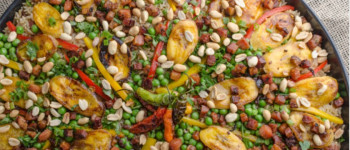 3rd Jun 2024
3rd Jun 2024
 17th Dec 2024
17th Dec 2024
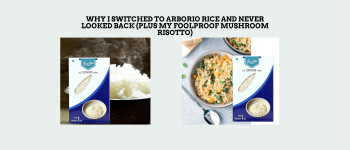 29th Aug 2025
29th Aug 2025
 20th Nov 2024
20th Nov 2024
 30th Dec 2024
30th Dec 2024
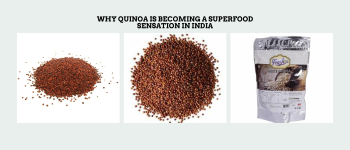 15th Oct 2024
15th Oct 2024
 4th Oct 2025
4th Oct 2025
 10th Nov 2025
10th Nov 2025
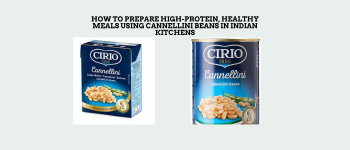 6th Aug 2025
6th Aug 2025
 13th Oct 2025
13th Oct 2025
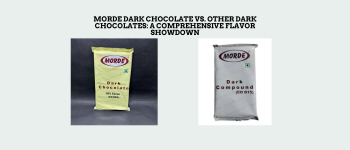 28th Nov 2024
28th Nov 2024
 18th Nov 2024
18th Nov 2024
 12th Nov 2024
12th Nov 2024
